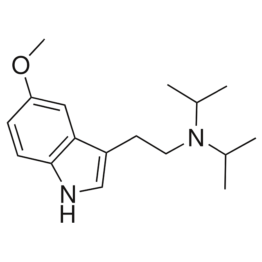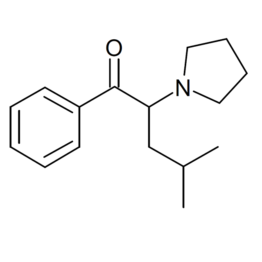Transition metal (TM)-catalyzed carbon–carbon (C–C) bond activation has emerged as a useful tool for devising unusual bond-disconnecting strategies. (7) To seek a complementary ring-forming approach, a deconstructive strategy based on C–C bond activation of readily available cyclic ketones has been conceived (Scheme 1A). This named “cut-and-sew” strategy (8) uses cyclic ketones with a tethered unsaturated moiety as substrates. It […]
Isolated from marine fungus Penicillium bilaiae MA-267, penicibilaenes A (8) and B (9) are two sesquiterpenes showing selective and potent activity against plant pathogenic fungus Colletotrichum gloeosporioides. (37) They possess an intriguing tricyclo[6.3.1.01,5]dodecane skeleton, which is constituted by [3.3.1]-bridged and [4.3.0]-fused junctions. They also contain six chiral centers with five being contiguous and one all-carbon quaternary stereocenter. Inspired by the […]
Isolated from extracts of Podocarpus latifolius, cycloinumakiol (1) exhibits a distinct proposed chemical structure from other natural products in the tricyclic inumakiol family. (29) In particular, it shows an unusual tetracyclic skeleton featuring a dihydrofuran ring and a quaternary carbon center. From a retrosynthetic aspect (Scheme 18A), (10a) we envisioned that the isopropyl group on the phenyl ring could be […]
Considering that the carbonyl moiety in the substrates can be removed by decarbonylation, (4 + 2 – 1)-type transformations, namely, “decarbonylative cut-and-sew” reactions, have also been developed. This provides an unusual strategy to access bridged- or fused-ring scaffolds without bearing a ketone moiety. In 2014, the (4 + 2 – 1) reaction between benzocyclobutenones and alkynyl […]
The use of saturated cyclobutanones provides opportunities to access various aliphatic ring systems. For example, β-branched cyclobutanones can undergo (4 + 2) cut-and-sew reactions to generate bridge bicycles. The seminal work by Murakami et al. demonstrated the synthesis of benzo-fused [3.2.1] bridged rings (Scheme 8), (9f) though the scope is limited to the benzene linker due to […]
Benzocyclobutenones are a common class of four-membered ring ketones. (11,12) They can be easily accessed by diverse methods, including [2 + 2] cycloaddition with benzynes, (12b,c,e,g) intramolecular nucleophilic addition, (12a) transition metal-catalyzed intramolecular C–H functionalization, (12d,f) and photoinduced cyclization. (12h) Driven by strain release (their ring strain is higher than saturated cyclobutanones), (13) benzocyclobutenones are excellent substrates for transition-metal-mediated C–C bond activation. Inspired by Liebeskind et al.’s […]


Recent Comments